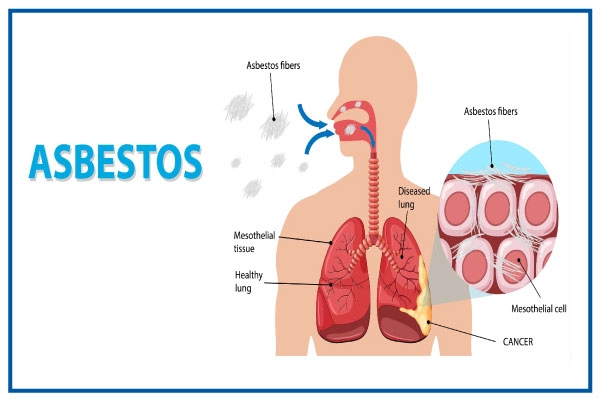A naturally occurring material, asbestos was previously widely employed in manufacturing and construction because of its strength and ability to withstand fire. But it’s commonly known that asbestos exposure can cause serious health problems, such as mesothelioma and lung cancer. To safeguard your health and well-being, you’ll go over the seven main indicators of asbestos exposure in this post.
1. Respiratory Issues and Chronic Coughing
When asbestos fibers are breathed in, they can become lodged in the lung tissue, which can then result in inflammation and scarring. A persistent cough, in addition to other respiratory problems such as shortness of breath, is frequently one of the earliest signs of asbestos exposure. This can be due to the body’s attempt to eliminate the foreign fibers, which then results in scarring, which in turn affects lung function. These symptoms, if left untreated, can eventually lead to more serious lung diseases.
2. Persistent Chest Pain and Plaques
It is common for people who have been exposed to asbestos to develop pleural plaques, which are areas of scarring on the lining of the lungs and the chest wall. Because of the scarring, some people experience discomfort, agony, or a feeling of pressure in their chest. Even while pleural plaques could not be fatal on their own, the existence of these points to a significant history of asbestos exposure and an elevated probability of developing diseases associated with asbestos.
3. Unintentional Weight Loss and Mesothelioma
Unexpected weight loss that defies explanation could be a sign of more serious asbestos-related illnesses, such as mesothelioma. Mesothelioma is a particularly severe form of cancer that can attack the lining of the chest cavity, abdominal cavity, or heart. The body’s systemic reaction to the presence of cancerous cells can manifest as a loss of weight, which is one of the earliest warning signs of this condition.
4. Finger Clubbing and Asbestosis
Anomalies in the fingers that result in bloating and fingertips expanding are called finger clubbing. This disease is sometimes linked to recurrent lung ailments like asbestosis. Asbestosis, which is a scarring in the lung tissue produced by asbestos fibers, can lead to lower oxygen levels in the blood and poor lung function. Asbestosis can also lead to scarring in the tissue of the chest cavity. There is a risk of death associated with asbestosis.
5. Difficulty Swallowing and Throat Irritation
Exposure to asbestos can irritate the esophagus, which can make it difficult to swallow. The fibers can also cause dysphagia since they have the potential to influence the nerves and muscles that govern swallowing. Cancer of the throat caused by asbestos exposure can impact the upper respiratory and digestive tracts, making swallowing difficult and leaving the throat in a constant state of discomfort.
6. Hoarseness and Persistent Dry Cough
Inhaling asbestos fibers can cause inflammation of the throat or vocal cords, which can result in hoarseness as well as a dry, persistent cough. This inflammation can cause a person to have trouble speaking clearly. In addition, hoarseness can be a symptom of lung cancer caused by asbestos exposure. The persistent irritation can induce alterations to take place in the vocal cords, which can ultimately result in hoarseness or persistent coughing.
7. Fatigue and Weakness
Chronic inflammation and exhaustion can be the result of the immunological reaction that the body has to asbestos fibers. In addition, advanced lung disorders that are linked to asbestos exposure, such as mesothelioma or asbestosis, can induce significant fatigue due to reduced oxygen intake and higher energy demands on the body to cope with breathing difficulties. This can lead to a vicious cycle of exhaustion.
Conclusion
It is essential to comprehend and identify these indicators of asbestos exposure in order to seek early medical attention. For a proper diagnosis and course of action, you must seek medical assistance as soon as you suspect you have been exposed. Furthermore, be sure to consult a professional for help determining where the asbestos you’ve been exposed to can be found and eliminating it. Treatment for asbestos-related disorders and the prognosis can be improved if safeguards are taken and medical guidance is promptly sought upon recognizing these indicators.
Sources:
https://www.asbestos.com/asbestosis/symptoms/
https://www.lung.org/lung-health-diseases/lung-disease-lookup/asbestosis/symptoms-diagnosis
https://my.clevelandclinic.org/health/diseases/11394-asbestos-exposure-and-your-health
